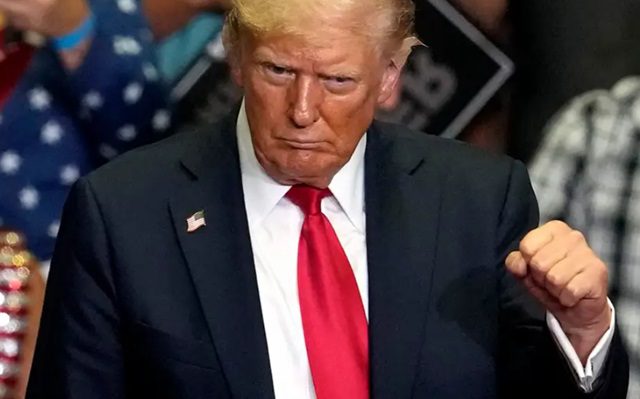BTN News: Donald Trump has some clear ideas about the U.S. economy if he wins the upcoming November elections. His remarks on this subject have sparked fears of trade wars and geopolitical chaos. However, some people are excited about his “America First” policies. They believe these policies will bring jobs back to the United States.
Trump’s first term in the White House had mixed results regarding the economy. However, many voters trust his financial management more than that of the Democrats.
President Joe Biden has struggled to sell his ideas to Americans. A mid-July poll by The Economist and YouGov shows that 51 percent of citizens disapprove of how Biden handles employment and the economy. Fifty-eight percent dislike his approach to inflation and prices, and 54 percent believe the economy is worsening overall.
More of the Same from Republicans?
Currently, inflation and rising prices are a severe problem for ordinary people. In the same poll, 25 percent of respondents declared inflation and prices as the most important issues, far above immigration, employment, and the economy.
During his 90-minute speech to accept his nomination at the Republican National Convention on July 18, Trump shared his vision for the country. He said, “We will restore the republic and usher in the rich and wonderful tomorrow that the people so deserve.” He promised that “America’s future will be bigger, better, bolder, brighter, happier, stronger, freer, greater, and more united than ever before.”
Most of Trump’s economic ideas do not differ much from his first term. The Republican candidate wants to maintain a tough stance, tariffs, and tax cuts. The difference now is that he has more experience and determination.
“Trump faced many obstacles in his first term, blockages he is determined to eliminate immediately,” says Dan Mallinson, associate professor of Public Policy and Administration at Penn State University, Harrisburg. The selection of J. D. Vance as his running mate is another clear message to businesses. Vance, who once worked in venture capital, is critical of immigration and big corporations. He has called for the dissolution of tech giants and wants to focus on domestic manufacturing and industry.
High Tariffs on Non-American Products
For Trump, the way to boost American manufacturing is through tariffs. Among other measures, he has suggested a general 10 percent tariff on all imports to the U.S. and an exceptionally aggressive 60 percent tariff on all goods from China.
In response, other countries would likely impose counter-tariffs, potentially leading to a situation resembling a trade war.
Deporting More Immigrant Workers
Trump cannot govern alone and has the support of the Republicans and their 2024 GOP Platform, a 16-page document outlining the party’s intentions. Published a week before the Republican National Convention in Milwaukee, the text is sparse on details. It advocates typical “America First” ideas, such as reducing regulations, bringing manufacturing back to the U.S., and deregulating the energy sector.
Additionally, it calls for sealing the Mexican border to stop illegal immigration and “conducting the largest deportation operation in U.S. history.” While border closures and deportations might seem unrelated to the economy, they would have far-reaching consequences. Besides creating a humanitarian crisis, deporting millions of immigrants would make it even harder to find workers in a country already facing a significant labor shortage. Meanwhile, Republicans want to introduce “Buy American, Hire American” policies, which would ban companies outsourcing jobs from doing business with the U.S. government.
Other Republican Economic Ideas
Trump and the Republicans also want to make the 2017 tax cuts permanent and exempt restaurant and hospitality workers’ tips from income tax. According to experts, all these tax cuts, along with the promised tariffs and deportations, could worsen the deficit, push up wages, and increase inflation.
“Though he talks a lot about inflation, it’s unclear that his economic policies are equipped to tackle it,” says Dan Mallinson.
While Trump has been clear about his goals, Kamala Harris has yet to outline her economic vision. However, based on her support of Biden as vice president, she is likely to maintain many of Biden’s economic plans.
She is expected to continue defending workers’ rights, renewable energy production, and the return of manufacturing for strategic technical products like semiconductors to the U.S. Global trade will remain important, but some import tariffs are likely to stay.
Currently, the economy seems relatively strong, but according to Dan Mallinson, “the Democrats are not benefiting from it.” “This is largely due to pocketbook voting. Voters tend to think about how their wallets are doing, not how well the economy might be doing overall.”


